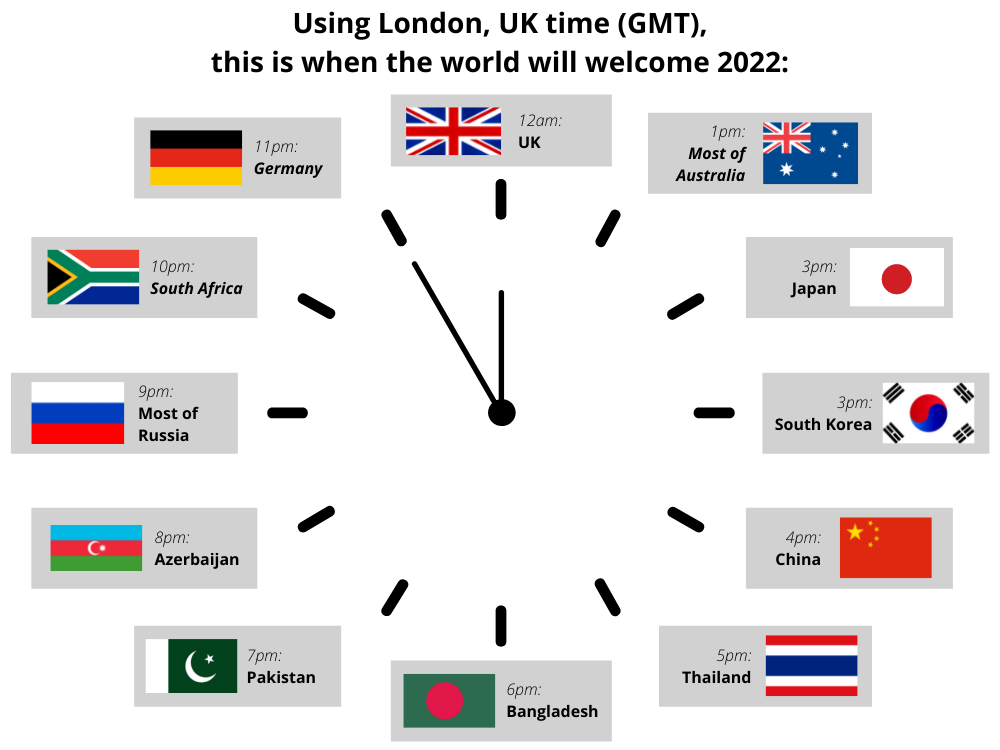
New Year Traditions Around The World
2022 is nearly upon us and millions of people around the world will celebrate the arrival of the new year. Although we may celebrate in difference time zones, some countries even celebrate New Year on different dates. Such as Chinese New Year and Islamic New Year.
The majority of countries use what is known as the Gregorian calendar. So the New Year begins on January 1st and is one of the biggest celebrations the world over. Other countries may use the Luna calendar, which has a more flexible date.
Not only that, but we all celebrate in different ways too, with some observing intriguing superstitions.
Let’s see how many of these you know of!
Australia
Australia is one of the first countries to celebrate New Year. With only the islands to the east, such as Tonga and Samoa, beating them by a couple of hours. Australians love their firework displays and will often venture into cities, jump on a boat cruise or head to the beach hours earlier to get the best viewing spots. Major cities hold parades, entertainment and huge firework displays. Sydney harbour being the most iconic – 1.5 million people flock to capture a view of the spectacles.
Brazil
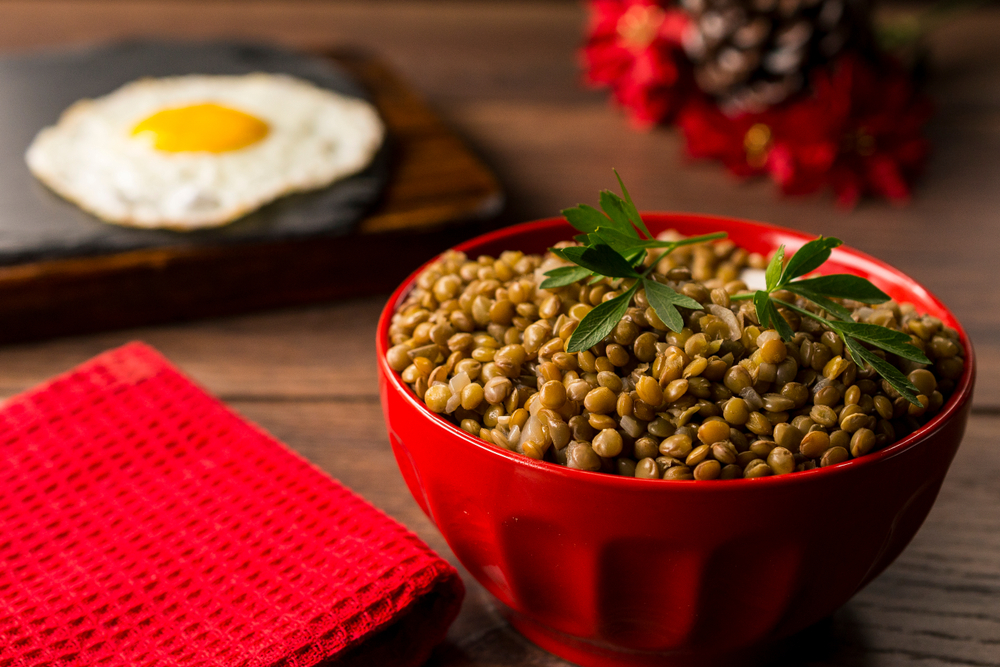
One of the customs that many Brazilians adhere to is consuming lentils on New Year’s Eve . As this symbolise money and therefore good fortune. The number 7 is seen as a lucky number so often, that many Brazilians will do things seven times. For example, eating seven pomegranate seeds keeps their purse full. Seven grapes will ensure prosperity in all areas of their life.
Brazilians may even jump over seven waves in the sea and make seven wishes. You may also notice an abundance of white flowers and candles in the sea. Many South American countries place offerings to the water goddess Yemoja. She controls the seas and they wish for her blessings for the next year.
Canada
Canada doesn’t have the warmest climate on New Year so heading to a beach is not really an option! But, it’s not unheard of for groups of friends to gather and spend the evening ice-fishing, celebrating throughout the night. Others may choose to ice skate around the frozen lakes. If they are really lucky, they’ll catch a glimpse of the aurora borealis. If all that doesn’t float your boat, there are plenty of venues to warm up in to drink, sing and dance the night away.
China
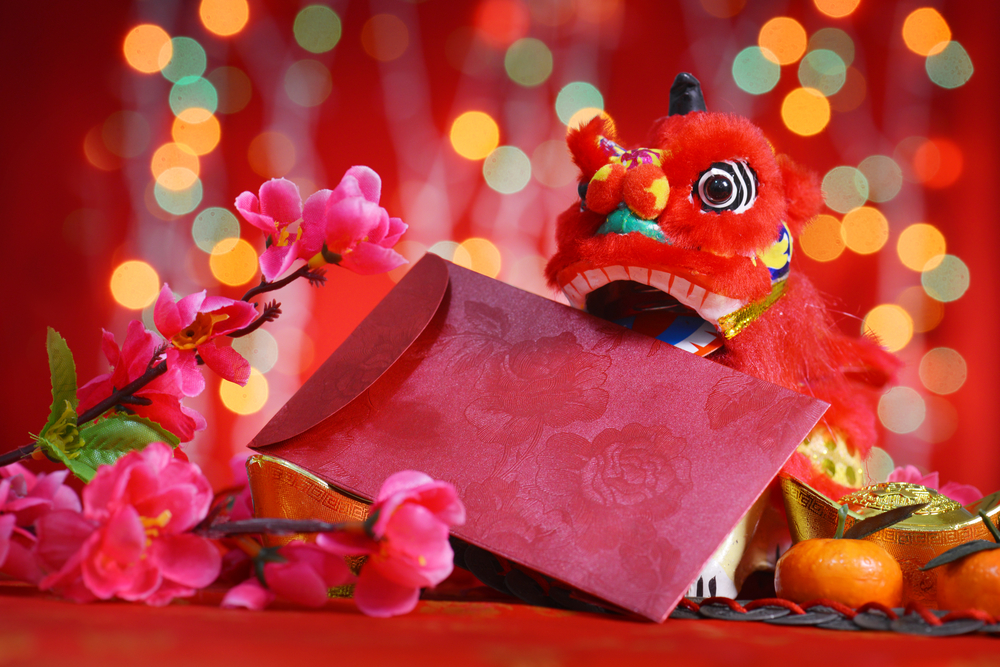
The Chinese New Year is also known as Lunar New Year. It is celebrated at a different time from 1st January, unlike many other countries. It falls between 21 January and 20 February depending on the lunar cycle.
The lunar new year is a huge time for families to get together. Everywhere is adorned with red decorations, which symbolises good fortune and wealth. Also, the colour red is supposed to scare the mythical and legendary lion monster Nian, along with loud noises. Hence, pyrotechnics are an essential part of the celebrations. Children or unmarried adults without a job, receive red gift packets containing money. Anywhere from a couple of dollars to sizable amounts
Czech Republic
Silvestr, aka New Year’s Eve in Czech, is a time to gather and celebrate in large groups. Alternatively, smaller affairs at friends’ houses also take place. Food and drink are key to toast the new year, along with firework displays, akin to most European countries. Having said that, there are a few other things to consider. You mustn’t leave washing out on the clothesline or a family member could die in the coming year. Also, be nice to people on New Year’s Day, because your behaviour will influence how the rest of the year plays out.
Denmark
For New Year’s Eve in Denmark, it is customary for friends and family to throw plates at your front door. This is to bring good luck into the new year and banish evil spirits. It also represents leaving behind aggression and the bigger your pile of ceramic, the luckier you will be.
Many Danes also stand on a chair or sofa and jump off it at midnight. Leaping into the new year as the clock strikes midnight. Many Russians observe this too.
England
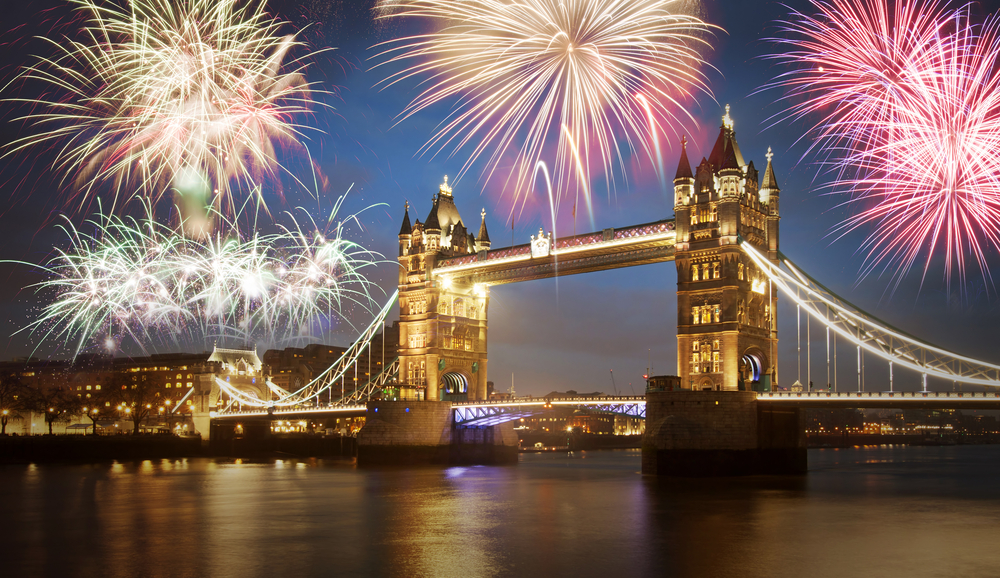
England hosts its fair share of parties, both public and smaller homely soirees. Drinking, singing and dancing is a huge part of the build-up. You’ll get to see some stunning fireworks after the clock has struck midnight, then everyone joins together to sing Auld Lang Syne. Normally lots of kissing and hugging and toasting the New Year afterwards.
Estonia
In Estonia, the numbers 7, 9 and 12 are considered lucky numbers. A dinner of 7 small meals (or more!) is considered good luck to bring in the new year, with plenty of vodka. However, it is not advised to clear your plates until the next day; you need to leave some food out for other family members- of the spirit kind!
Finland
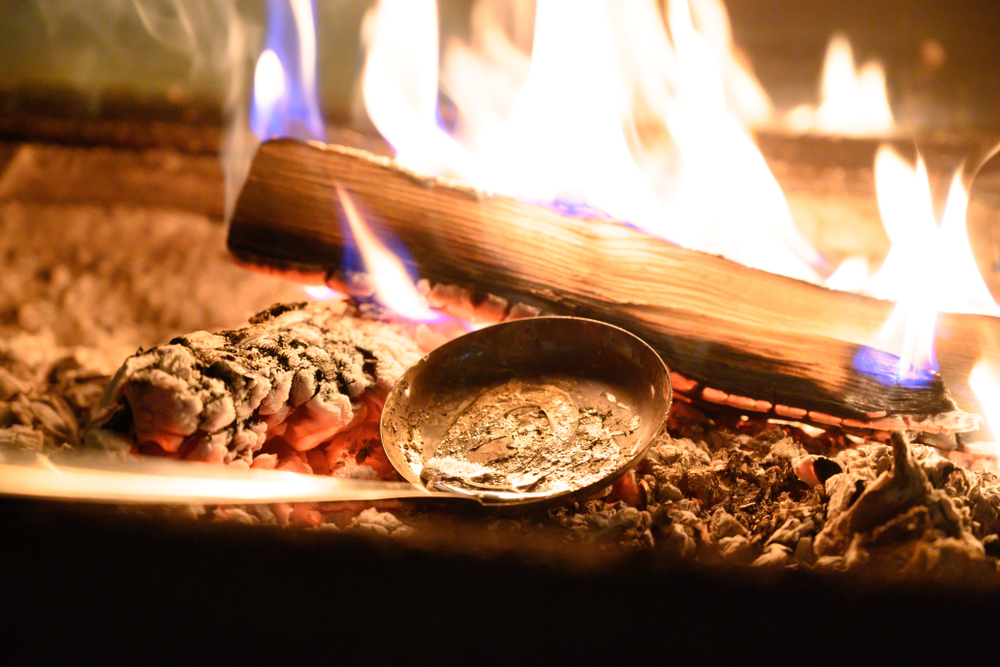
Both Finland and Germany have a tradition of melting a small piece of lead or tin, then pouring it into cold water. From the shape it takes once hardened, your future can be determined. So, if the piece of metal resembles a ship, you will travel. A heart? You will have a wedding. To be blessed with plenty of food, you would need to see a pig!
France
Like many other European countries, France loves its fireworks displays, either planned public events, or small, more private home parties. Decadent food, such as oysters, foie gras, and escargot, reigns all washed down with delectable drinks such as champagne. A feast that brings in the new year with a bang. Kissing under the mistletoe is a new year tradition in France. This is unlike many other countries that enjoy it earlier at Christmas time.
Greece
You will find onions hanging on the doors of houses in Greece. They symbolise rebirth, longevity, good health and good luck. Greek parents will wake their children by tapping the onion on their heads in the morning. This is to wake them up for church. The onions are usually kept in the house until the next new year.
Another tradition, that is also very popular in Turkey, is smashing pomegranates. These fruits again symbolise prosperity and abundance. The more seeds land and the more that split from the fruit, the better off you will be. If you don’t have a pomegranate, you can always sprinkle salt on someone’s doorstep as a goodwill gesture. Promoting peace and riches ahead.
Ireland
The Irish like to bash loaves of bread against the walls in order to drive out any evil spirits. This leaves room for the good to be invited in for the New Year. This act was also thought to help bring an abundance of food and bread throughout the year.
It is common to have a huge spring clean throughout your house, starting the year with a clean slate. You may find families sitting for a meal with a place set for loved ones that have died that year, remembering those they lost.
Italy
Italians celebrate San Silvestro (New Year’s Eve) as much as any other country. Like others, people will eat lentils. Promoting longevity as they are long-lasting, or good fortune because they resemble ancient small coins. As with Spain, Italians may eat 12 grapes for the 12 seconds leading up to the strike of midnight, resembling good fortune for each month of the year.
You may see lots of people wearing red, and even if they aren’t outwardly dressed in red, you can bet their underwear will be red. However this has to be a new and a gift from someone! Doing this is said to usher romance into the new year and help with fertility.
Japan
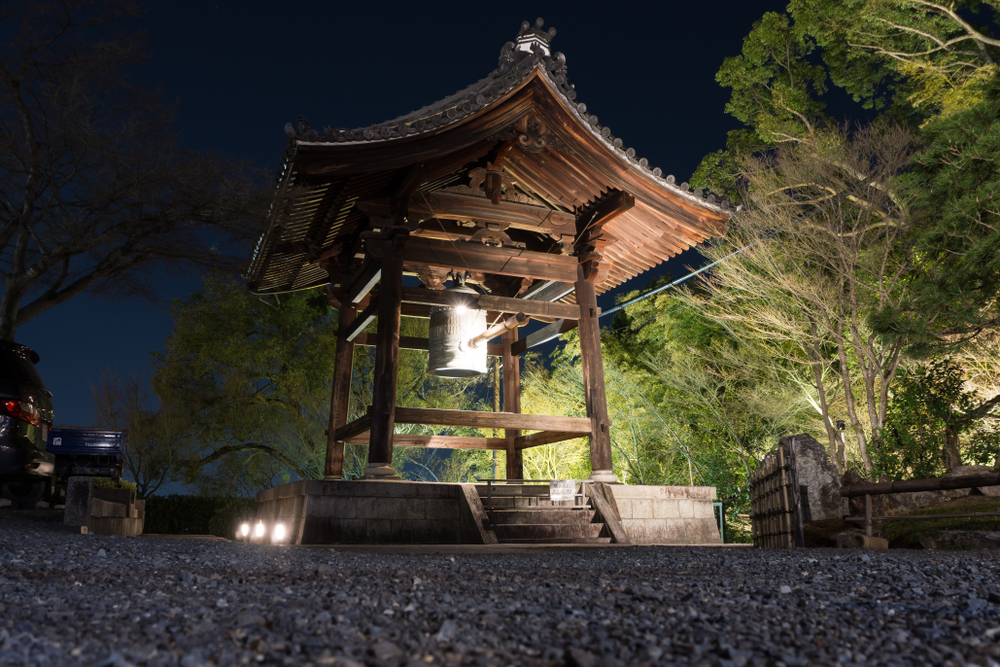
Japan, and South Korea, can be a very noisy affair in the lead up to midnight. In total, bells ring 108 times, with the final one on the stroke of midnight. Known as ‘joy-an-okane’, the temple bells ring for the 108 sinful desires that we all have throughout our lives, and the ringing of the bells cleanses us of anxiety and problems from the previous 12 months, in anticipation of the New Year ahead.
Toshikoshi soba noodles are eaten on New Year’s Eve too- also known as the ‘year-crossing noodle’. The long thin food symbolises a long and healthy life, and the easy cutting of the noodles allows a fresh start for the new year.
Johannesburg
You could well see plenty of old unwanted furniture on the streets of Johannesburg on New Year’s Eve. A lot of people believe in a fresh start to the new year, and so declutter and get rid of unwanted items, and they are quite often thrown out of the window! Literally out with the old and in with the new.
Pakistan
Pakistani celebrations vary with some following the Islamic calendar meaning their New Year, known as Nawrooz (new day), is celebrated on a different day, yet some do celebrate it on 1st January. The Islamic calendar has Islamic New Year falling in and around March, pertaining to the Gregorian calendar.
Many people burn piles of wood, seen as burning off the bad energies of the old year. Along with beating drums and lighting oil lamps in order to secure a brighter and better future, people enjoy festivals, parties and music. The day is full of zest, hope and optimism with families and friends, along with prayers for peace and stability.
Russia
The New Year happens in Russia before Christmas, because Russia still uses the Julien calendar for religious events, meaning Christmas Day is not until 7th January. For the New Year in Russia, you may want to write your wishes on a piece of paper. You then burn your wishes by candle and drink the remaining ashes in a glass of champagne. Russian children may even get a visit from Grandfather Frost, their version of Father Christmas! Presents are often exchanged on this date with Christmas being almost a week away.
Scotland
First-footing is very common in Scotland as they celebrate Hogmanay and midnight strikes. If you hope for good luck over the next 12 months, your first visitor over the threshold to your home should be a dark-haired male who carries a gift of coal, salt or whisky. This stems from centuries ago when seeing a blonde man at your door normally signified a Viking and some extremely unsavoury behaviour would follow! Showing up empty-handed is extremely bad luck and, not to mention, just rude! Thousands of Scots take to streets and public squares to celebrate in style, with bonfires, fireworks and, of course, plenty of whisky!
South America

Many of the countries in South America have very similar traditions. This can include eating lentils, as outlined with Brazil, or stuffing them in your pockets. It isn’t unusual to see people pulling an empty suitcase – the ‘suitcase walk’ will hopefully bring the bearer twelve months of adventure.
Have you got lucky underwear? If you wear red, you’ll be lucky in love, yellow means you’ll be fortuitous with finance and white will bring you tranquillity.
Quite often you will see effigies of famous people being burned, such as pop stars or politicians. The burning symbolises clearing all the bad from the last year, making room for all the good in the upcoming year.
Spain
The number 12 is significant in Spain and many South American countries. It is customary to eat 12 grapes in the 12 seconds leading up to the strike of midnight – one per second, with the final grape devoured at the last second. It is considered bad luck if you do not complete it by midnight. The sales of cava do very well at this time of year too – people gather in street and town squares and pass round drinks and food, spreading the cheer.
The Philippines
Many people believe round items bring wealth – the nature of the circular look represents coins. Filipinos will wear dresses made of polka dots, eat round fruits and scatter coins around the house in order to bring more money and luck. Pineapples and jackfruits etc are seen as bad luck because of their thorny appearance which may bring obstacles over the next 12 months.
USA
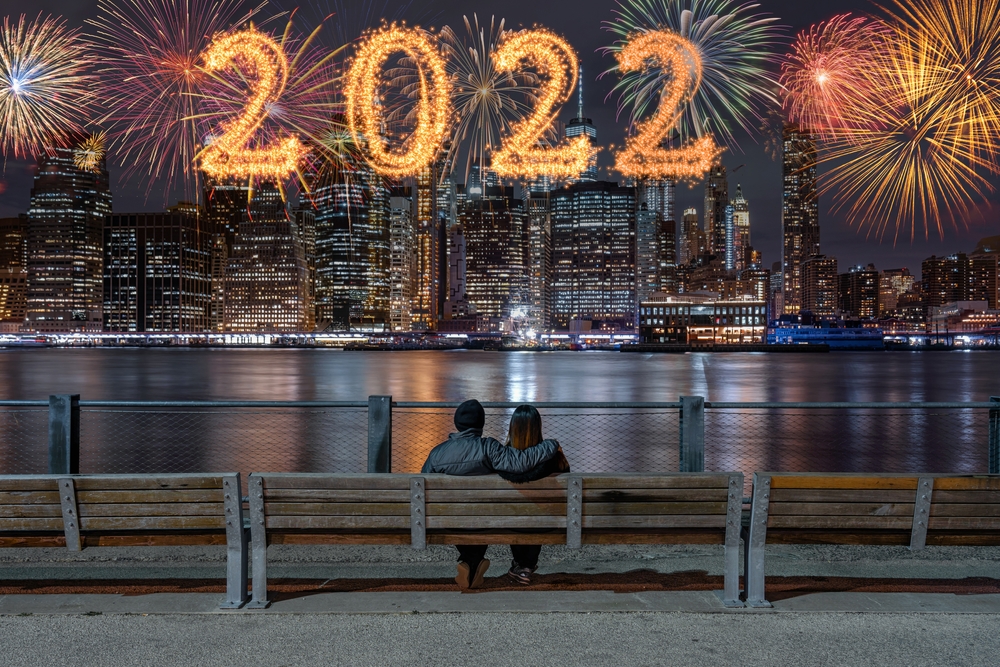
Americans just love to celebrate and party on New Year’s Eve. City squares all over the country host firework bonanzas and many cities and towns have a ‘ball-drop’, the most famous being Times Square. The ball is covered in over 2,500 crystals and weighs almost 12,000lbs! The tradition started in the early 1900s to precede the countdown and the ball rests at the bottom of the pole by the stroke of midnight.
Hundreds of people will join the Polar Bear Plunge which is pretty much what it sounds like, dipping into icy cold waters, and nowadays most participants do it to raise money for charity.
Wales
As in Scotland, first-footing is still a tradition in Wales, where a dark-haired man leaves the back of the house, walking round to the front and should be the first visitor to knock on the stroke of midnight and enter the house! If your first visitor was a woman or a man with red hair, this was deemed bad luck.
Did You Know?
Every New Year’s Day in Antarctica, the rod that marks where the geographic south pole is gets moved around 10 metres due to the movement of the ice throughout the year. Each annual marker is made by the staff working nearby.
